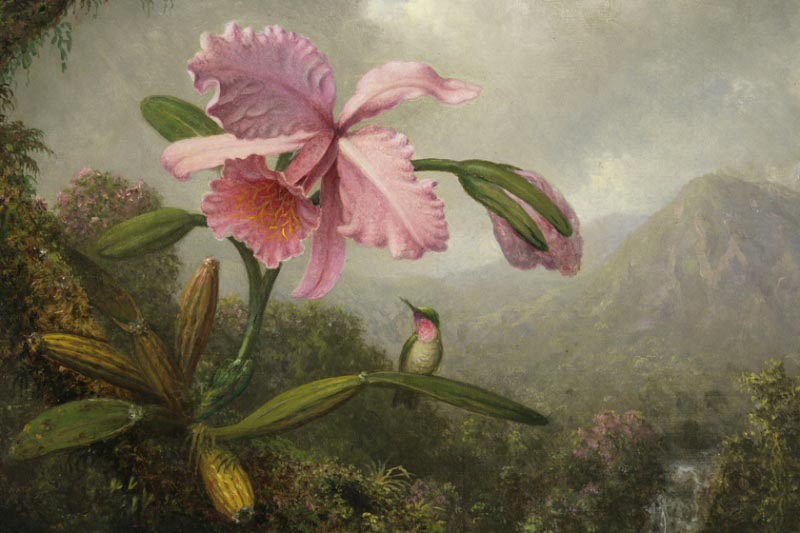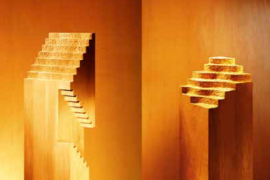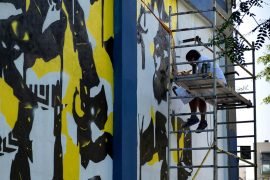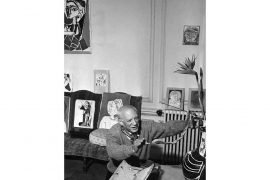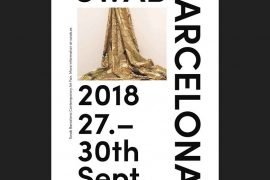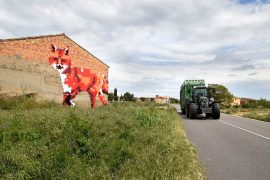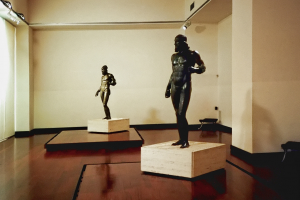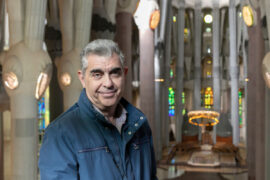[dropcap letter=”T”]
rying to think of the idea of landscape in painting can cause qualms, or it may seem as broad a topic as the writing about what you did this summer when you returned to school in September. Just in case, this fall has already begun to remind us of the extent to which landscapes are changing one year with the other. In fact, he has reminded us so much, that we almost begin to suspect of the very truth that can be found in a still picture. And maybe this is why autumn, which is the season changing per se, is a good time to appreciate the phases and meanders of the landscape: a pretext to be aware of how we look at it beyond its beauty on a specific day. Exhibitions such as the one that can still be visited at the Espai Carmen Thyssen in Sant Feliu de Guíxols -‘Nature in progress. From Van Goyen to Pissarro and Sacharoff’, until October 14th– offers the possibility to enjoy changes of perspective over landscapes and to admire the lushness of this pictorial tradition. Without worries and in such a specific manner that prevents the impression of summer writing task or of an unattainable ocean.
The curator of the exhibition, Pilar Giró, has set out a coherent and orderly itinerary, in the best sense of the word. Due to the different stalls which are included, due to the choice and the volume of works that it presents (well related to each other, taking into account that the Thyssen collection is characterized, above all, by landscaping), and due to the final gift: a tribute to the now vindicated -fairly vindicated- Olga Sacharoff.
This particular route through landscaping covers four centuries. From the 17th century, with the emergence of landscape painting as an independent genre, until the 20th century and the creation of a modern image of the immediate environment, depicting sea as a sublimation of the taste for nature.
The exhibition manages to show that the landscape itself has not been a fixed external object, found there to be represented. The landscape is formed and conditioned, also, by the focus, the interests, the perspective, the election, what is illuminated and what is not. The time and trends affect the landscape itself, more than what we think. Sometimes landscape appears as a wild and exuberant force, with a rather romantic look; at other times, as a dominated or even colonized nature.
The visitor feels that modernity and the fleetingness of time transcend the canvas and the landscapes themselves. The clear playful tone or the avant-garde touch also shines in the paintings by Miquel Villà i Bassols, Pere Créixams or Juan Alberto Soler-Miret (who paints, precisely, a Tribute to Heade where the showy flowers make the gesture of wanting to leave the picture)
Van Goyen and Andrea Locatelli start the show, the first with a landscape with a vessel and the second with nymphs and satyrs, emphasizing the contribution of Dutch painting in this field. Then, “the Marines” are no longer mere representations of naval battles, becoming scenarios of maritime landscape. This is when we introduce the horizontal format that we now take for granted. In this section, a series of examples of Spanish paintings from the 19th century and a considerable amount of ports appear (Ramon Martí i Alsina, Manuel Barmón Carrillo, Guillermo Gómez Gil, Emilio Ocón Rivas…). From here we jump to the taste for exoticism, including painters who portray the overseas colonies of America and the Indian Ocean. Often, in one corner or another of the picture, the presence of the colonizing authority is appreciated, but also the way of life in the colonies. The contributions of Charton and Hastrel are particularly interesting in this area. We see how, little by little, the interests are enlarged towards landscape itself, and therefore the complexity is opened. The bright colors of Charton announce this new look, which is driven into perpetual renewal.
POETICAL CRUTCHES
As if the exhibition was designed to confirm the sensations of the visitor, it is accompanied by some poetical crutches. This is the case of some verses by Martí i Pol, which are absolutely opportune for the landscape route and -why not- also for this fall’s excursions: “I flee from myself if I could not / recover my time and question him , / go back to the past as the person who returns to the house / where he lived and, by exploring it, finds / strikingly surprised all the indications / about what he is, and that he learns by contemplating them”.
The route advances in the direction of botanical knowledge and willing to reinforce the symbolic sense of the landscape (for example, it insists on the tropical image as a synonym of earthly paradise). The work Orchid and hummingbird near a waterfall by Heade, which is the promotional image of the exhibition, shows this maximally detailed will to depict nature in its splendor.
The path to Impressionism and the manner, even beyond that, in which the avant-gardes show the landscape with the imprint of new trends is collected by means of a handful of outstanding names in Catalan painting. Together with spectacular gardens by Rusiñol at the head (that sensual and insinuating green blue), one can see very interesting pieces by Josep Amat i Pagès, Eliseu Meifrèn i Roig, Josep Maria Mallol Suazo, Pere Guussinyé or the French artist Camille Pissarro. The visitor feels that modernity and the fleetingness of time transcend the canvas and the landscapes themselves. The clear playful tone or the avant-garde touch also shines in the paintings by Miquel Villà i Bassols, Pere Créixams or Juan Alberto Soler-Miret (who paints, precisely, a Tribute to Heade where the showy flowers make the gesture of wanting to leave the picture).
The highlight is the tribute to Sacharoff, whose paintings La Llotja and La colla are exhibited, where you can see some of his artistic friends. We have just enjoyed the work of some of them. For once, the wheel turn, the mirror tilts: it is a painter who has portrayed them.

